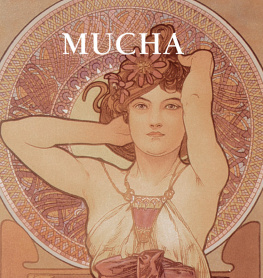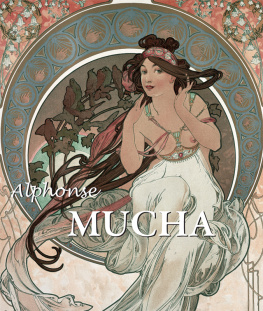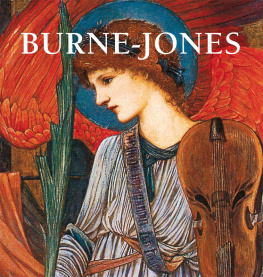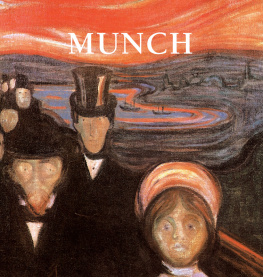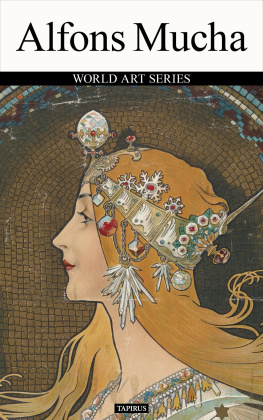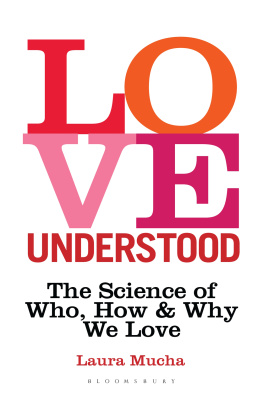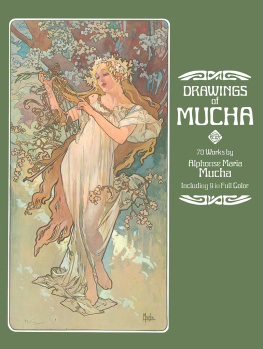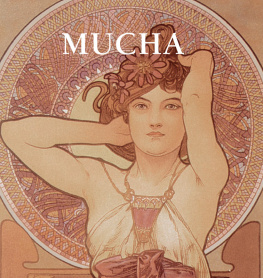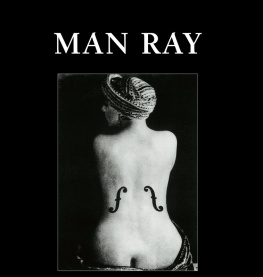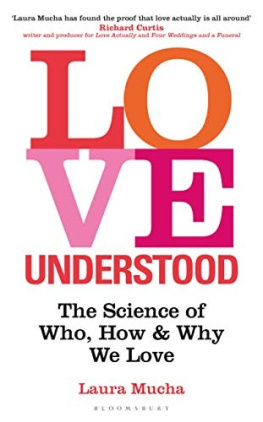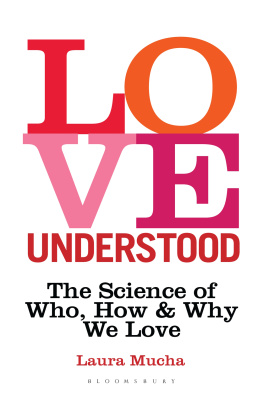Patrick Bade - Mucha
Here you can read online Patrick Bade - Mucha full text of the book (entire story) in english for free. Download pdf and epub, get meaning, cover and reviews about this ebook. publisher: Parkstone International, genre: Non-fiction. Description of the work, (preface) as well as reviews are available. Best literature library LitArk.com created for fans of good reading and offers a wide selection of genres:
Romance novel
Science fiction
Adventure
Detective
Science
History
Home and family
Prose
Art
Politics
Computer
Non-fiction
Religion
Business
Children
Humor
Choose a favorite category and find really read worthwhile books. Enjoy immersion in the world of imagination, feel the emotions of the characters or learn something new for yourself, make an fascinating discovery.
- Book:Mucha
- Author:
- Publisher:Parkstone International
- Genre:
- Rating:5 / 5
- Favourites:Add to favourites
- Your mark:
- 100
- 1
- 2
- 3
- 4
- 5
Mucha: summary, description and annotation
We offer to read an annotation, description, summary or preface (depends on what the author of the book "Mucha" wrote himself). If you haven't found the necessary information about the book — write in the comments, we will try to find it.
Patrick Bade: author's other books
Who wrote Mucha? Find out the surname, the name of the author of the book and a list of all author's works by series.
Mucha — read online for free the complete book (whole text) full work
Below is the text of the book, divided by pages. System saving the place of the last page read, allows you to conveniently read the book "Mucha" online for free, without having to search again every time where you left off. Put a bookmark, and you can go to the page where you finished reading at any time.
Font size:
Interval:
Bookmark:

Text: Patrick Bade
Confidential Concepts, worldwide, USA
Parkstone Press International, New York, USA
Estate Mucha / Artists Rights Society, New York, USA / ADAGP, Paris
ISBN 978-1-78160 - 614-8
All rights reserved. No part of this book may be reproduced or adapted without the permission of the copyright holder, throughout the world.
Unless otherwise specified, copyright on the works reproduced lies with the respective photographers. Despite intensive research, it has not always been possible to establish copyright ownership. Where this is the case, we would appreciate notification.
Alphonse
Mucha

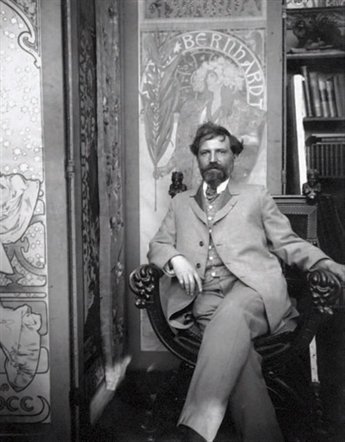
Since the Art Nouveau revival of the 1960s, when students around the world adorned their rooms with reproductions of Mucha posters of girls with tendril-like hair and the designers of record sleeves produced Mucha imitations in hallucinogenic colours, Alphonse Muchas name has been irrevocably associated with the Art Nouveau style and with the Parisian fin-de-sicle. Artists rarely like to be categorised and Mucha would have resented the fact that he is almost exclusively remembered for a phase of his art that lasted barely ten years and that he was regarded as of lesser importance. As a passionate Czech patriot he would have also been unhappy to be regarded as a Parisian artist.
Mucha was born on July 14, 1860 at Ivancice in Moravia, then a province of the vast Habsburg Empire. It was an empire that was already splitting apart at the seams under the pressures of the burgeoning nationalism of its multi-ethnic component parts. In the year before Muchas birth, nationalist aspirations throughout the Habsburg Empire were encouraged by the defeat of the Austrian army in Lombardy that preceded the unification of Italy. In the first decade of Muchas life Czech nationalism found expression in the orchestral tone poems of Bedrich Smetana that he collectively entitled Ma Vlast (My country) and in his great epic opera Dalibor (1868). It was symptomatic of the Czech nationalist struggle against the German cultural domination of Central Europe that the text of Dalibor had to be written in German and translated into Czech. From his earliest days Mucha would have imbibed the heady and fervent atmosphere of Slav nationalism that pervades Dalibor and Smetanas subsequent pageant of Czech history Libuse which was used to open the Czech National Theatre in 1881 and for which Mucha himself would later provide set and costume designs.
Muchas upbringing was in relatively humble circumstances, as the son of a court usher. His own son Jiri Mucha would later proudly trace the presence of the Mucha family in the town of Ivancice back to the fifteenth century. If his family was poor, Muchas upbringing was nevertheless not without artistic stimulation and encouragement. According to his son Jiri He drew even before he learnt to walk and his mother would tie a pencil round his neck with a coloured ribbon so that he could draw as he crawled on the floor. Each time he lost the pencil, he would start howling. His first important aesthetic experience would have been in the Baroque church of St. Peter in the local capital of Brno where from the age of ten he sang as a choir-boy in order to support his studies in the grammar school. During his four years as a chorister he came into frequent contact with the six years older Leo Jancek, the greatest Czech composer of his generation with whom he shared a passion to create a characteristically Czech art.
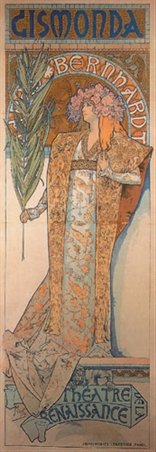
Coloured Lithograph, 74.2 x 216 cm.
Mucha Museum, Prague.
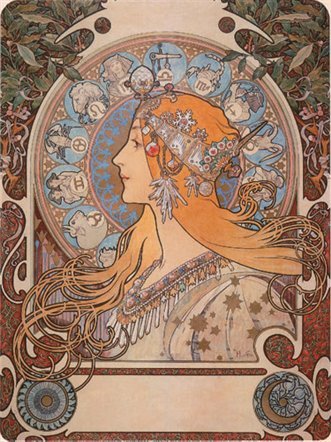
Coloured Lithograph, 48.2 x 65.7 cm.
Mucha Museum, Prague.
The voluptuous theatricality of Central European Baroque with its lush curvilinear and nature-inspired decoration undoubtedly coloured his imagination and inspired a taste for smells and bells and religious paraphernalia that remained with him. At the height of his fame, his studio was described as being like a secular chapel screens placed here and there, that could well be confessionals; and then incense burning all the time. Its more like the chapel of an oriental monk than a studio.
While earning a living as a clerk, Mucha continued to indulge his love of drawing and in 1877 he gathered together his self-taught efforts and attempted unsuccessfully to enter the Academy of Fine Arts in Prague. After two more years of drudgery as a civil servant, he lost his job, according to Jiri Mucha, because he drew the portraits of a picturesque family of gypsies instead of taking down their particulars. In 1879 he spotted an advertisement in a Viennese newspaper for the firm of Kautsky-Brioschi-Burghardt, makers of theatrical scenery who were looking for designers and craftsmen. Mucha sent off examples of his work and this time he was successful and received an offer of a job.
As a country boy who had been no further than the picturesque but still provincial Prague, Vienna in 1879 must have looked awesomely grand. It had recently undergone what was, after Haussmanns Paris, the most impressive scheme of urban renewal of the nineteenth century. Each of the great public buildings lining the Ringstrasse, which replaced the old ramparts that had encircled the medieval town centre, was built in a historical style, deemed appropriate to its purpose. The result was a grandiose architectural fancy-dress ball. The Art Nouveau style, of which Mucha would later become one of the most famous representatives, reacted directly against this kind of pompous wedding cake historicism. For the moment though, Mucha was deeply influenced by the showy and decorative art of Hans Mackart, the most successful Viennese painter of the Ringstrasse period.
After barely two years, Muchas Viennese sojourn came to an abrupt end. On December 10th 1881, the Ringtheater burnt down. In a century punctuated by terrible theatre fires, this was one of the worst, claiming the lives of over five hundred members of the audience. The Ringtheater was also one of the principal clients of the firm of Kautsky-Brioschi-Burghardt and in the aftermath of the disaster, Mucha lost his job.
Mucha moved to the small town of Mikulov and fell back upon the time-honoured method for artists to keep the pot boiling, of making portraits of local dignitaries. His unusual way of attracting a clientele is related in his memoirs. He booked into the Lion Hotel and managed to sell a drawing of some local ruins to a dealer called Thiery who displayed it in his shop window and quickly sold it on. So I got busy drawing again, not ruins this time but the people around me.

Watercolour on paper, 23.5 x 37 cm.
Mucha Museum, Prague.

Font size:
Interval:
Bookmark:
Similar books «Mucha»
Look at similar books to Mucha. We have selected literature similar in name and meaning in the hope of providing readers with more options to find new, interesting, not yet read works.
Discussion, reviews of the book Mucha and just readers' own opinions. Leave your comments, write what you think about the work, its meaning or the main characters. Specify what exactly you liked and what you didn't like, and why you think so.

